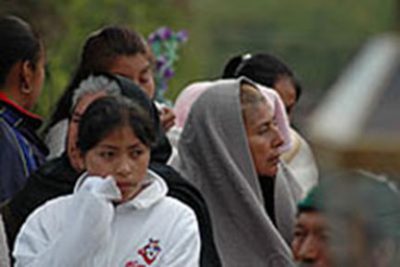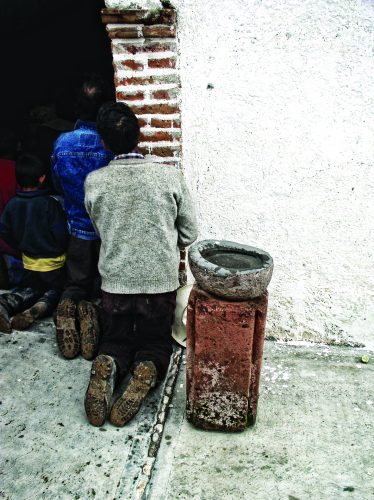Street Photography
“What is street photography?”
Simply put, street photography is about documenting everyday life and society. It’s photography conducted for art or enquiry that features unmediated chance encounters and random incidents within public places. Street photography does not necessitate the presence of a street or even the urban environment.
Furthermore, street photography is generally done candidly (without permission and without knowledge of your subjects). However I personally don’t think that street photography has to be candid. You can ask for permission when taking a photograph of a stranger. I don’t think just because a photo is candid makes it any better than a photo with permission. The most important thing in street photography is to capture emotion, humanity, and soul.
Therefore if you are drawn to taking photos in public (of mostly people) you are probably interested in street photography. Also as a side-note, I don’t think that street photography has to include people in it (although the best ones generally do have people in it).
So don’t worry so much about what “street photography” is and isn’t. The most important thing at the end of the day is creating powerful, compelling, and emotional images.
What to look for when shooting in the streets
Okay so now you have your camera, lenses, and technical settings sorted out in street photography. Now what do you look for when you’re out on the streets? Here are some things you can look for:
“The decisive moment” was a phrase coined by Henri Cartier-Bresson, one of the earliest practitioners of street photographers. “The decisive moment” is the same as the “Kodak moment” where everything comes together in a perfect moment, and you hit the shutter. So essentially it is capturing the photo with the perfect timing.
But realize “the decisive moment” is a bit misleading. There can be many “decisive moments” when you’re out shooting in the streets. This means if you see a good street photography scene, don’t just take one photograph. Take a ton of shots (I recommend 10-30 photos if possible). Even Henri Cartier-Bresson took 20+ photos of a single scene (if he thought it was interesting enough). Then afterwards in the editing process he would choose which image he felt was the best.
You can catch “the decisive moment” by the position of a person in the frame, in their facial expression, in their hand gesture, or their action or movement.
2. Juxtaposition
In street photography, you can create a strong image by juxtaposing elements in your frame. Juxtaposition is essentially a fancy word for contrast. But to be more specific, juxtaposition is when you put two different elements in a frame that directly contradict one another (while having a relationship). For example: taking a street photograph of a fat man next to a skinny man, a grandmother next to a child, someone in a red shirt in front of a green background (juxtaposing colors), etc.
To create a strong juxtaposition shot, you can either start off by looking for an interesting background (let’s say a billboard of a man looking happy) and waiting for someone who looks really happy to enter the frame.
Another strategy could be looking for certain emotions in people when you’re out on the street, and trying to find emotions of other people in the street that either are similar or dissimilar– and include them in the frame.
3. Emotion
To me, the most memorable street photographs are the ones that have strong emotion and show some sort of reflection on the human condition. This can include happiness, pain, sadness, loneliness, humor, anxiety, youth, and love.
To find emotion in street photographs is difficult. First of all, you have to find the emotion in the streets through peoples’ body language or facial expressions. Then you have to be quick enough to take the photograph before people notice you. However if you do it well, you will create a compelling and emotional image that people can connect with on a deeper level.
4. Graphical/visual elements
Not all street photography needs to be super emotional. Some street photographs are purely visual images– that appeal to our sense of geometry, composition, and composition. These images are generally shot in good light with nice lights and shadows, have strong diagonal lines, leading lines, curves, and shapes of interest.
5. Focusing on details
Some of the best street photographs focus on the details, not the whole picture. When you are shooting on the streets, you can focus on small details. This means rather than taking a full-body shot of someone on the streets, focus on their hands, their face, their earrings, their hands, their feet, or anything else they are holding.
By showing less of what is going on in the photograph, you create more mystery in your image. Less is more.
6. Urban landscapes
I don’t think street photography has to include people in it. Sometimes you can create compelling urban landscapes that show some sort of human condition and reflection on society.
The hardest thing to do in urban landscapes is to find a scene that somehow elicits a sense of nostalgia, emotion, or societal critique. For example, photographing a run-down building can make a strong societal statement.
When photographing urban landscapes, it is also extremely important to have a nice composition, sense of symmetry, and balance.
It is hard to make interesting urban landscapes– but to better capture them you can read my guide on urban landscapes.
7. Commonly found objects
Sometimes the most interesting street photographs are of stuff on the ground. So take photos of common objects you find in public places. Get close up to them, juxtapose them against other objects, and experiment using a flash. Try to be creative and find ways to make them interesting.
How to Conquer Your Fears of Shooting Street Photography
Conquering your fear of shooting street photography is one of the most difficult things to overcome. Read my articles on hacking your psychology to build your confidence when shooting on the streets:
- Shoot What You’re Afraid Of
- You Have Nothing to Fear But Fear Itself
- Don’t Be Afraid
Street photography techniques:
- Work the scene
- Use your flash
- Get eye contact
- Get low
- Capture the “unguarded moment”
- Direct your subject
- “Can you do that for me again”?
- The “fishing” technique
- Shoot head-on
- Create layers/depth
- Look for lines/patterns/texture
- Embrace negative space
- Minus exposure compensation
- Leading lines
- Subtract from the frame




